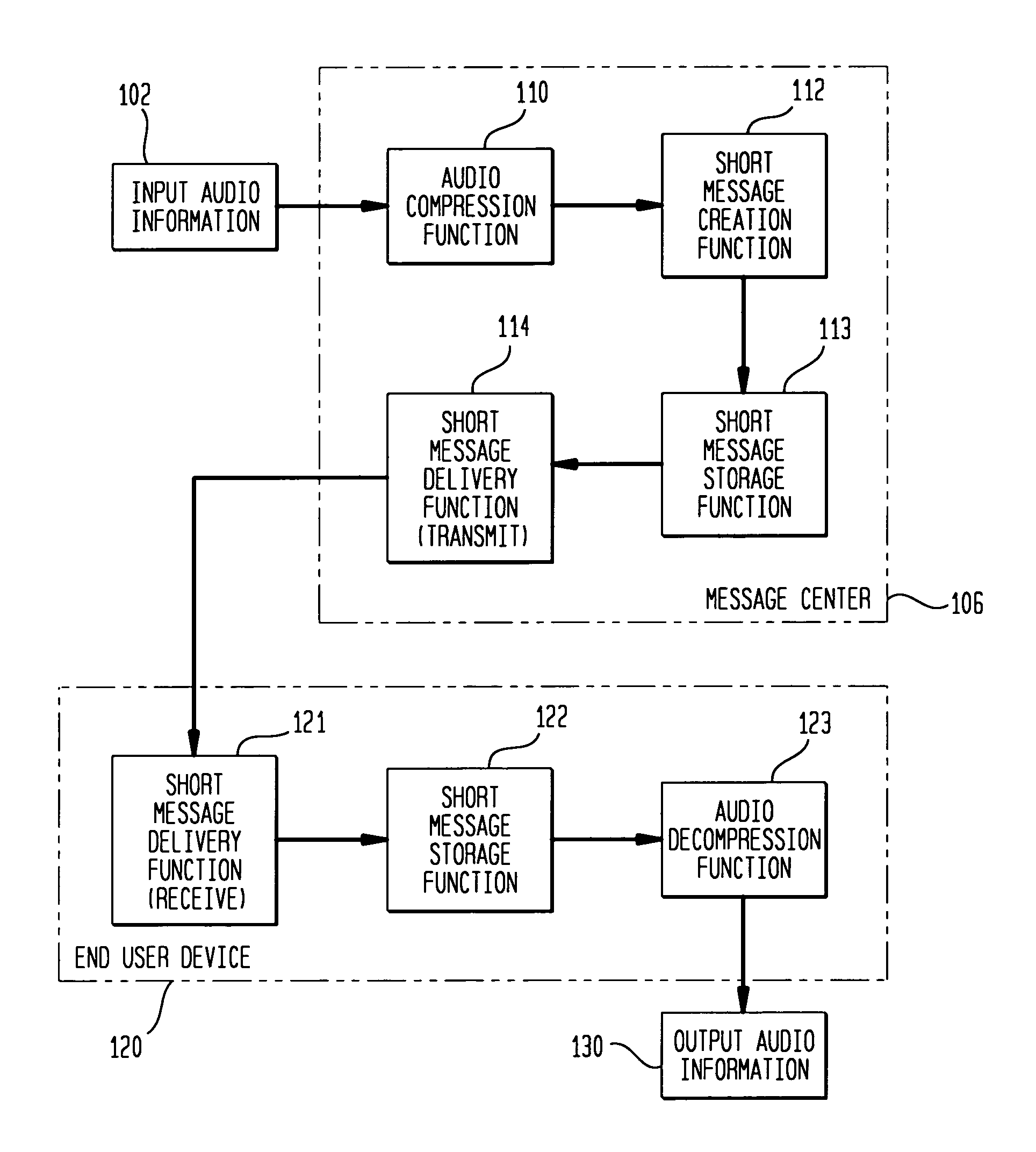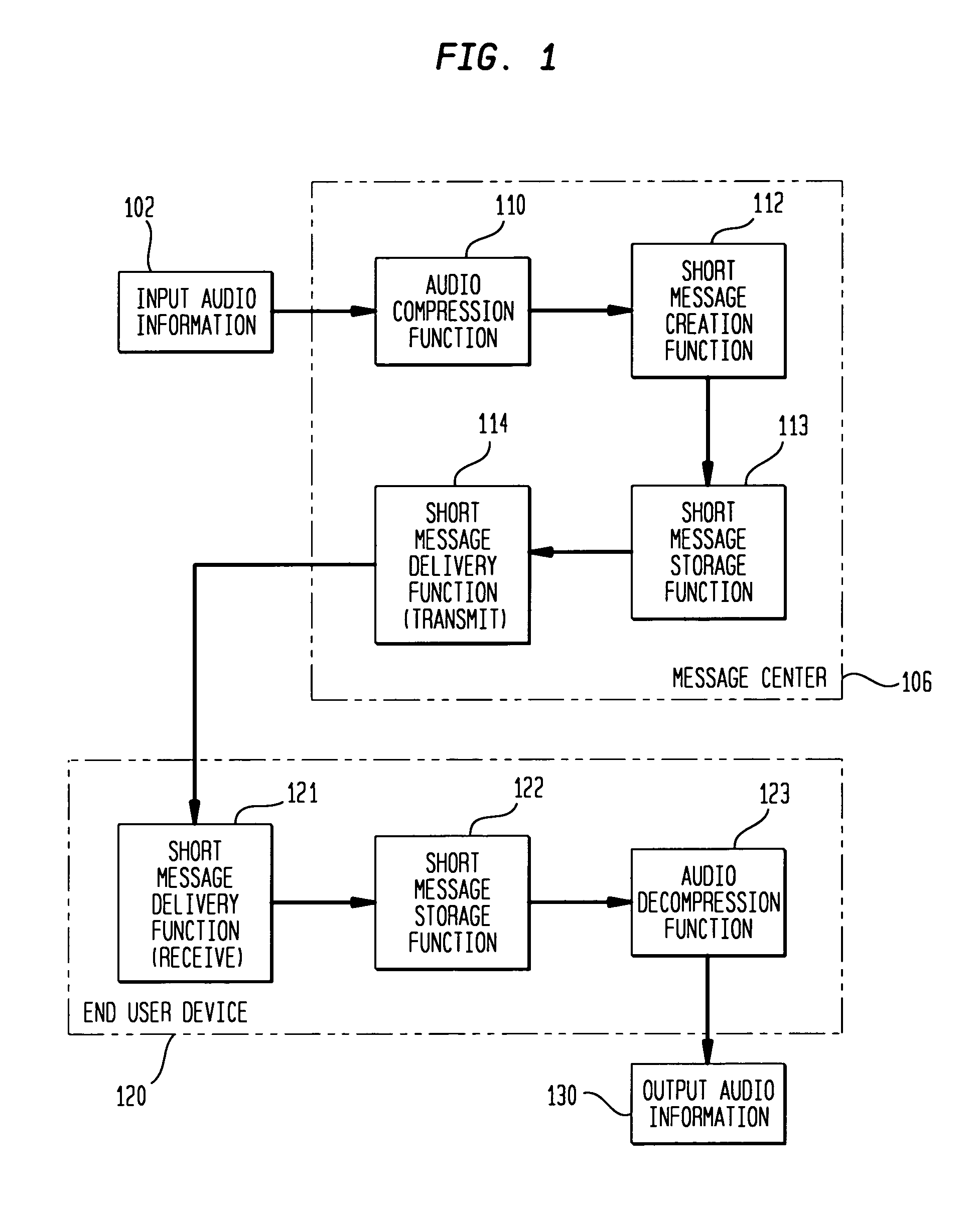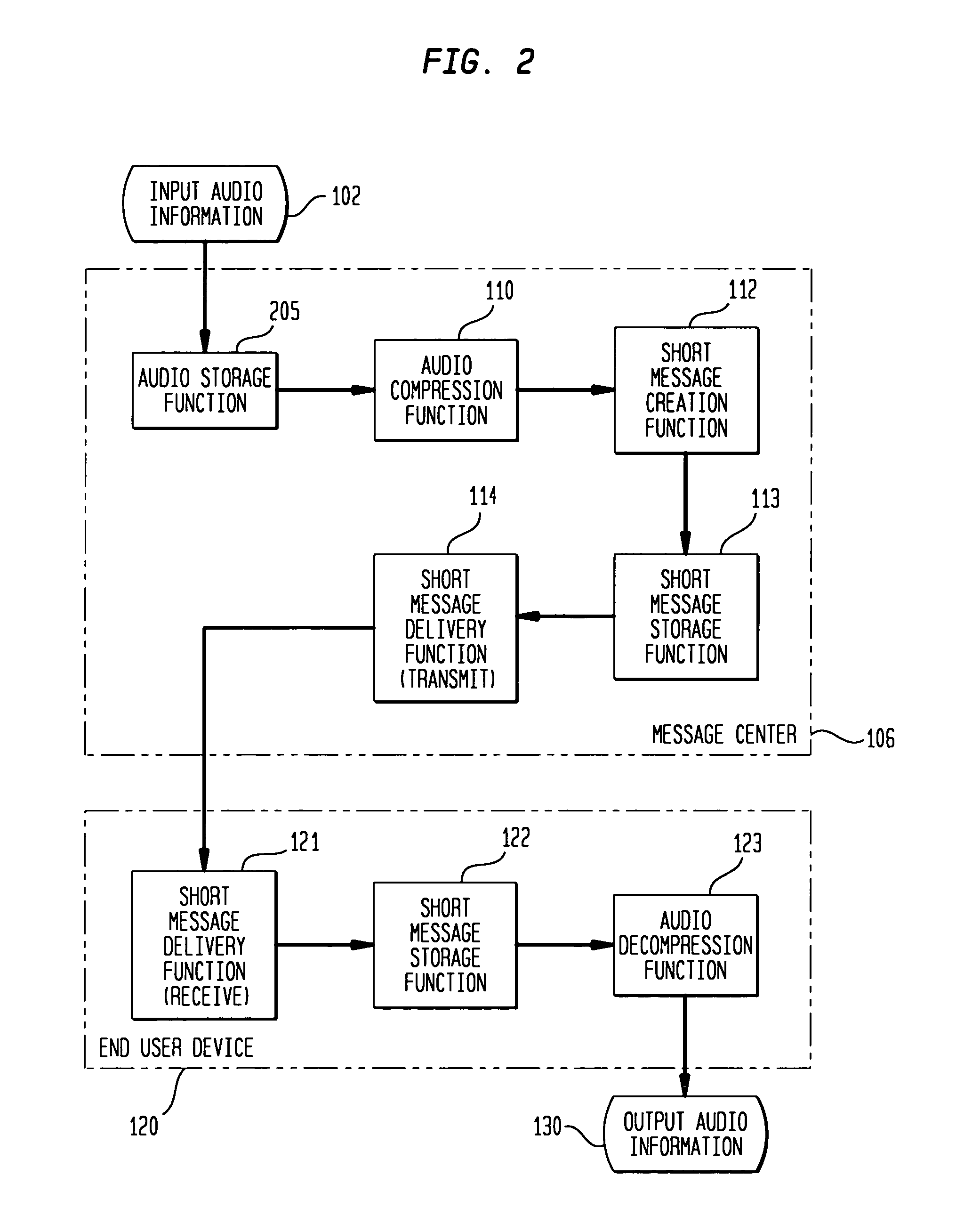Using discrete message-oriented services to deliver short audio communications
a message-oriented service and audio technology, applied in the field of audio message delivery, can solve the problems of high resource consumption, defeat the major advantage and intent of a mobile telephone or other remote receiving unit, and the method of messaging is not readily usable by the visually impaired
- Summary
- Abstract
- Description
- Claims
- Application Information
AI Technical Summary
Benefits of technology
Problems solved by technology
Method used
Image
Examples
Embodiment Construction
[0023]This invention allows audio messages to be sent to and from remote receiving devices such as mobile telephones, through the adaptation of already existing technologies, in combination with new communications structures, in order to provide new functions. In a preferred embodiment of the invention, a short audio message, e.g., “Call home, emergency!”, is encoded and delivered directly to a digital mobile station via Short Message Service or another discrete message-oriented service. The audio message is subsequently played back to the recipient by utilizing the decoding technology already located in the mobile station. Such audio messages can be delivered to a mobile phone unit even while the intended recipient is engaged on another call, and can be played back as often as the end user desires. The invention can be utilized both for short audio messages or for audio messages in combination with longer voice mail messages and text. Two way audio messages and audio paging are als...
PUM
 Login to View More
Login to View More Abstract
Description
Claims
Application Information
 Login to View More
Login to View More - R&D
- Intellectual Property
- Life Sciences
- Materials
- Tech Scout
- Unparalleled Data Quality
- Higher Quality Content
- 60% Fewer Hallucinations
Browse by: Latest US Patents, China's latest patents, Technical Efficacy Thesaurus, Application Domain, Technology Topic, Popular Technical Reports.
© 2025 PatSnap. All rights reserved.Legal|Privacy policy|Modern Slavery Act Transparency Statement|Sitemap|About US| Contact US: help@patsnap.com



